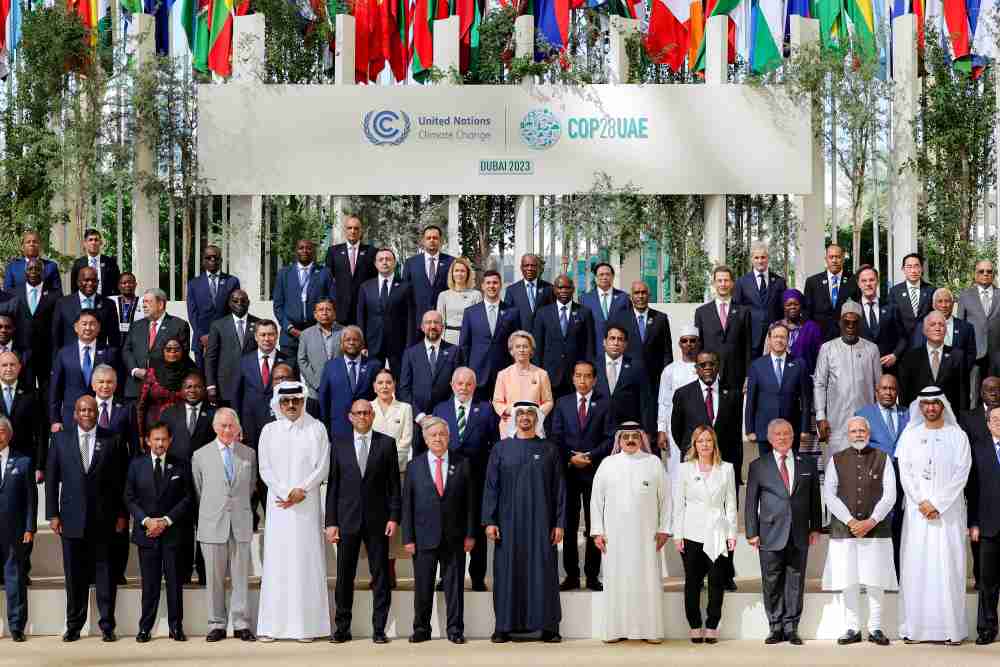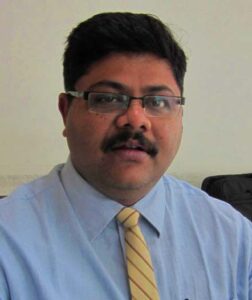



The Conferences of the Parties or COP, as known popularly, – is an annual global summit to discuss, debate and decide upon the unanimous action to be taken upon global warming, climate change, biodiversity conservation and other environmental issues across the globe. The Dubai Summit (UAE) or the COP28 concluded recently was the 28th Summit since 1994.
It is often said that every year, in spite of holding COP summits, the deterioration of the natural environment has been going on as it is. So what’s the point in having mere discussions? Therefore, it is important to understand the background and history, because introspection can only be done, when we see the complete picture.
The journey so far
The Intergovernmental Panel on Climate Change (IPCC) was 1st established in the year 1988. The IPCC conducted data collection, research and comprehensive study for two years, which resulted in the release of their first assessment report in 1990, which concluded that “anthropogenic activities are the key cause of global warming and climate change”. Now this wasn’t the first time that the world came to know about this fact, the scientific community has been reporting, discussing and highlighting the same since the 1950s, but still this was a landmark achievement, because this time it was an official intergovernmental report. It was politically accepted by member countries.
The report was alarming, but it still took the global political leaders two more years to form the United Nations Conference on Environment and Development (UNCED) in 1992. We need to understand that the imbalances in the fine natural ecosystems are translated by people as a ‘local natural disaster’ not a global phenomenon, which results in this lethargy and indecisiveness of the political leadership.
The key takeaways from the Rio de Janeiro, Brazil, June, 1992 was the formation of three unique UN bodies on Biodiversity, Desertification and Climate Change (or the UNFCCC), which lead to the first ever COP Summit at Berlin, Germany in 1995, This was attended by a total of 118 member countries.
A peek into the past summits
| 1995 | COP 1 | Berlin | we aren’t doing enough |
| 1996 | COP 2 | Geneva | each country to have own policy |
| 1997 | COP 3 | Kyoto | Carbon Credit Concept |
| 1998 | COP 4 | Buenos Aires | Finalizing Kyoto Protocol & strategy to acceptance |
| 1999 | COP 5 | Bonn | Still discussing Kyoto |
| 2000 | COP 6 | Hague | Still discussing Kyoto for plan of action |
| 2001 | COP 7 | Marrakech | Still finalizing Kyoto for plan of action |
| 2002 | COP 8 | New Delhi | Developed nations to assist Developing countries on adopting Kyoto Protocol through financial & technology support |
| 2003 | COP 9 | Milan | |
| 2004 | COP 10 | Buenos Aires | Developed and Developing countries discussions |
| 2005 | COP 11 | Montreal | Enforcement of Kyoto Protocol between 2008 – 20012 |
| 2006 | COP 12 | Nairobi | Concept of Clean Development Mechanism (CDM) introduced |
| 2007 | COP 13 | Bali | Post Kyoto Protocol discussions |
| 2008 | COP 14 | Poznań | Formulation of replacement agreement Post Kyoto Protocol |
| 2009 | COP 15 | Copenhagen | Discussion on financial impact of Kyoto protocol implementation |
| 2010 | COP 16 | Cancún | Formation of Green Climate Fund |
| 2011 | COP 17 | Durban | Post Kyoto Protocol enforcement discussions |
| 2012 | COP 18 | Doha | Amendment to the Kyoto Protocol |
| 2013 | COP 19 | Warsaw | Inconclusive due to walk out by global south |
| 2014 | COP 20 | Lima | Tussle continues |
| 2015 | COP 21 | Paris | Primary goal to limit global warming below 2°C below 1.5°C |
| 2016 | COP 22 | Marrakech | Finer details of Paris agreement |
| 2017 | COP 23 | Bonn | Finer details of Paris agreement |
| 2018 | COP 24 | Katowice | Finer details of Paris agreement |
| 2019 | COP 25 | Madrid | Article 6 of Paris agreement |
| 2020 | COVID impact, COP Summit didn’t take place | ||
| 2021 | COP 26 | Glasgow | Article 6 of Paris agreement |
| 2022 | COP 27 | Sharm El Sheikh | Global stock takes or the progress report |
| 2023 | COP 28 | Dubai | Cutting emission and moving away from fossil fuels |
So, if we look at the report card summarized above, there’s absolutely no doubt that we’ve been moving quite slow towards progress.
No time to ponder over
It’s high time for the world & the world leaders to work on the path and pace correction too. We can’t work on only emission reduction, because switching over from fossil fuels to renewables wouldn’t happen overnight and we don’t have that luxury of time today.
Rich & poor nations, developed & developing nations, global north & global south pointing fingers on each other, is leading us nowhere. We’ve seen 28 summits now. The roadmap is only talking about reducing emissions, switching over from fossils to renewable energy sources, all of which will take another half a millennium. Scientific community warned about global warming way back in the 1960s and we’ve already spent almost 70 years playing the blame game.
The only way out is to work on “removal” of legacy emissions, to rebuild a sustainable planet. We’ve got to restore the Water, Air and Soil, back to their native conditions, to restore the climate.
(The author is an think tank on ecological rejuvenation & sustainable development)
Kisani Urjaa Pvt. Ltd. (KUPL), an agri-tech enterprise focused on sustainable rural transformation, has appointed…
Sistema.bio, a biodigestion technology provider for family farmers, has signed a Memorandum of Understanding (MoU)…
The annual report by Global Energy Monitor on the global iron and steel fleet has…
The Union Minister for Petroleum & Natural Gas, Hardeep Singh Puri has held that the CBG…
To strengthen the green fuel ecosystem, the Union Ministry of Petroleum and Natural Gas (MoPNG)…
A new study by International Council on Clean Transportation (ICCT) has held that six in…
View Comments
I have a strategy for development of solar power generation without using land(it's difficult, time consuming and expensive).
How the existing Infrastructure can be used nation wide and also globally making each nation self sustaining for production of clean power.
As solar power needs pv panels and other related spares, power generation is possible faster and return on investment is quicker compared to traditional large solar parks.
As per COP 28 pledge of tripling the clean power generation my strategy is more viable financially and faster implementation.
For further details to discuss at length I can be reached on below mentioned contact details.
Best Regards,
Kusshal
M - +919819130398
E - kusshalkthakker@gmail.com
Very good idea of SDG.